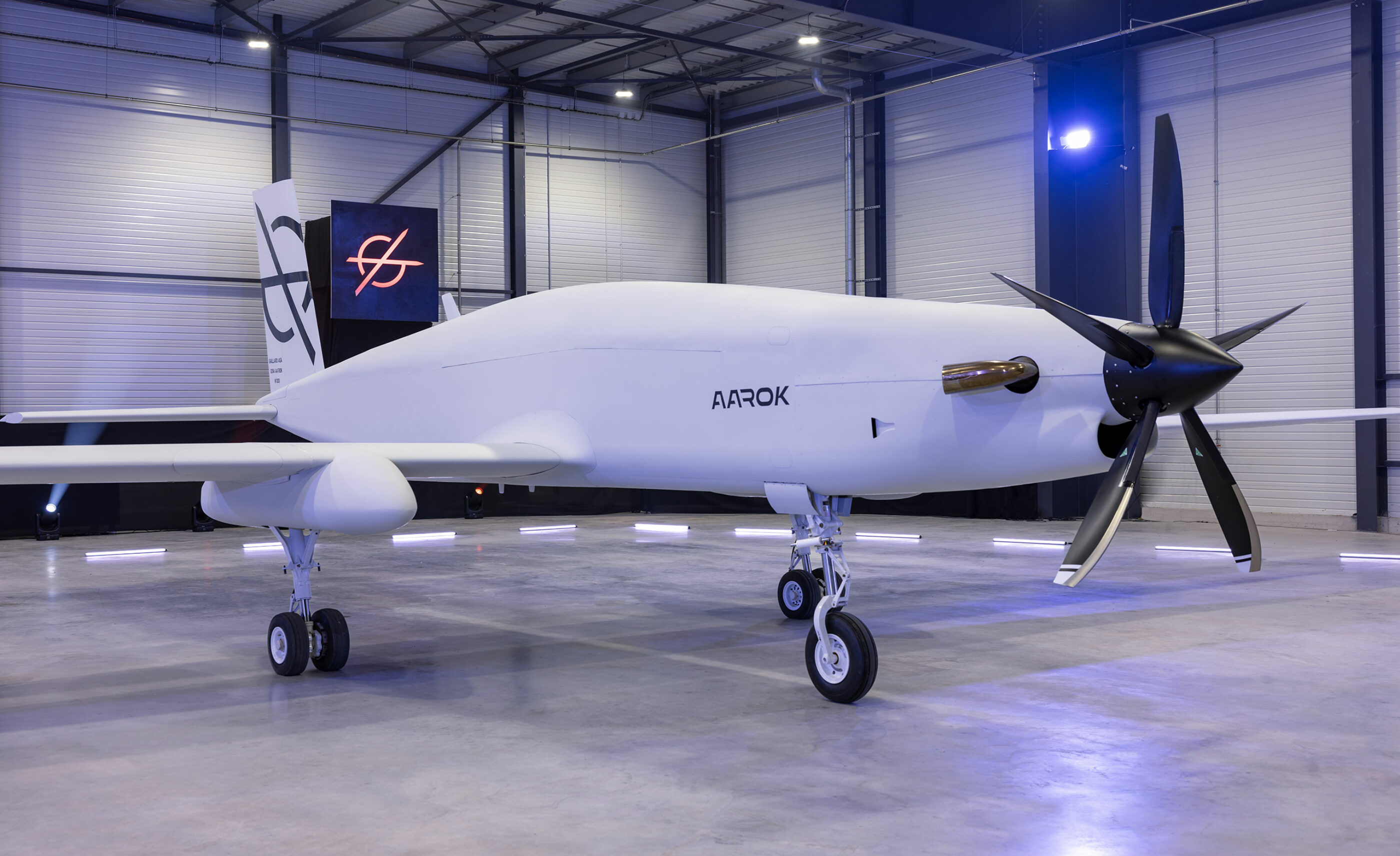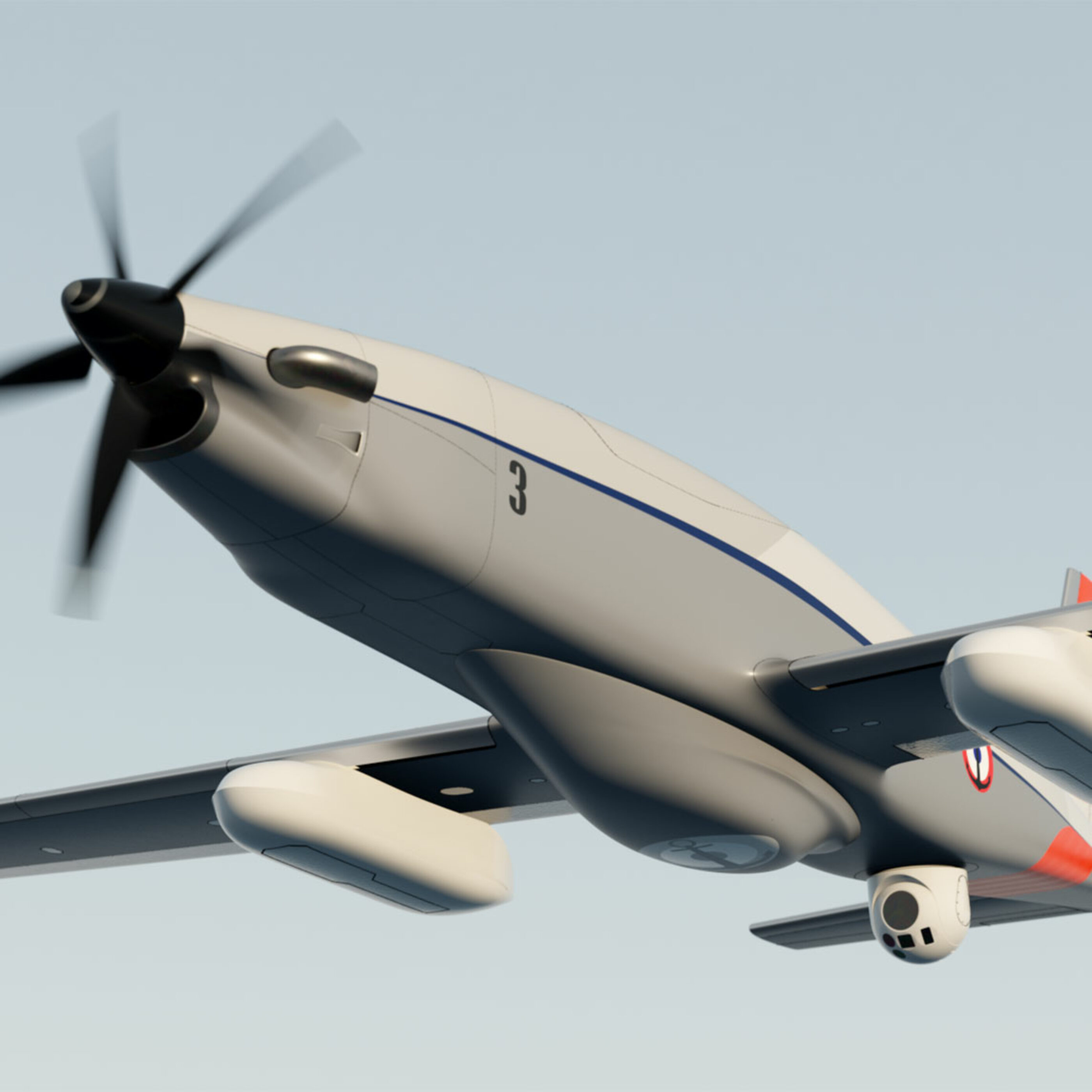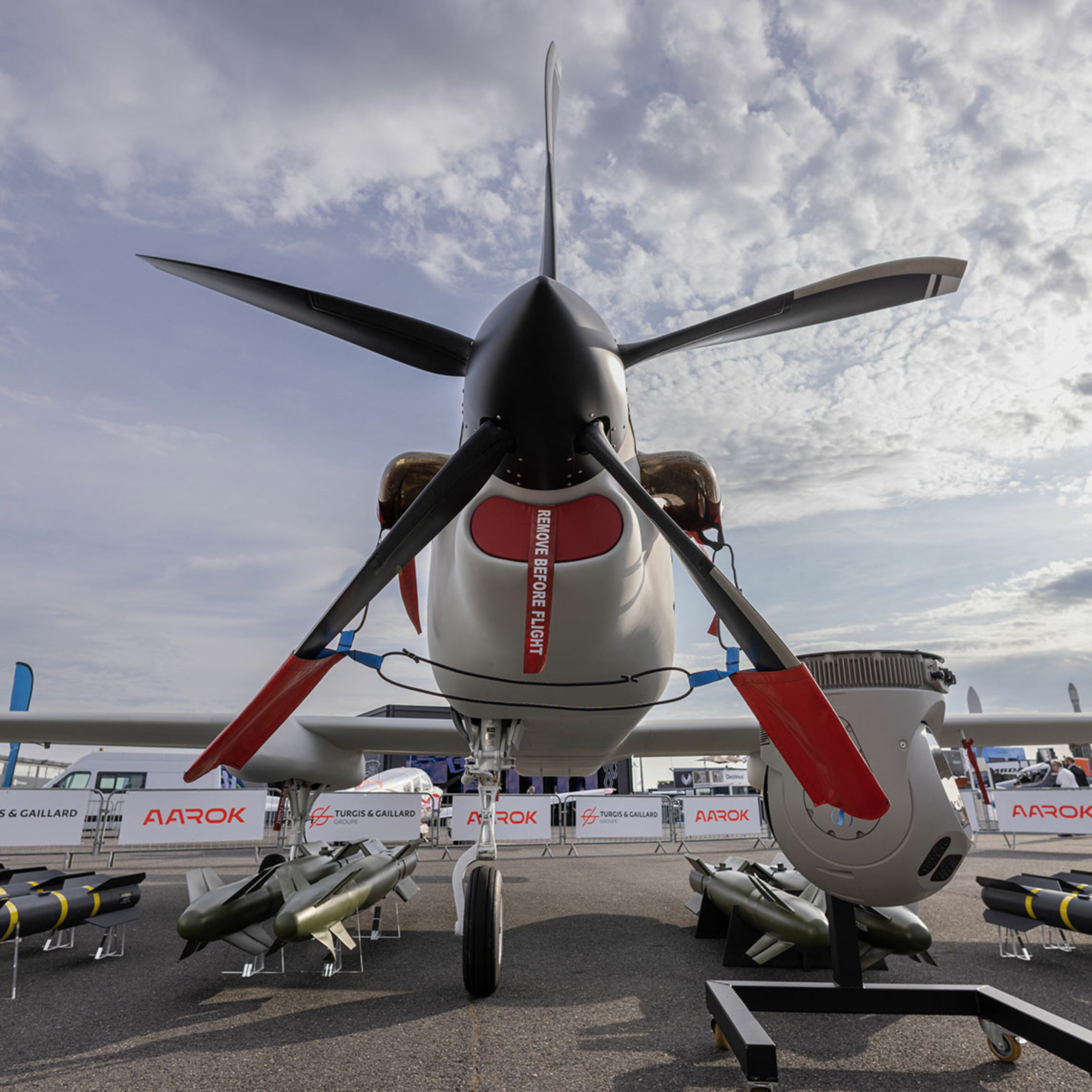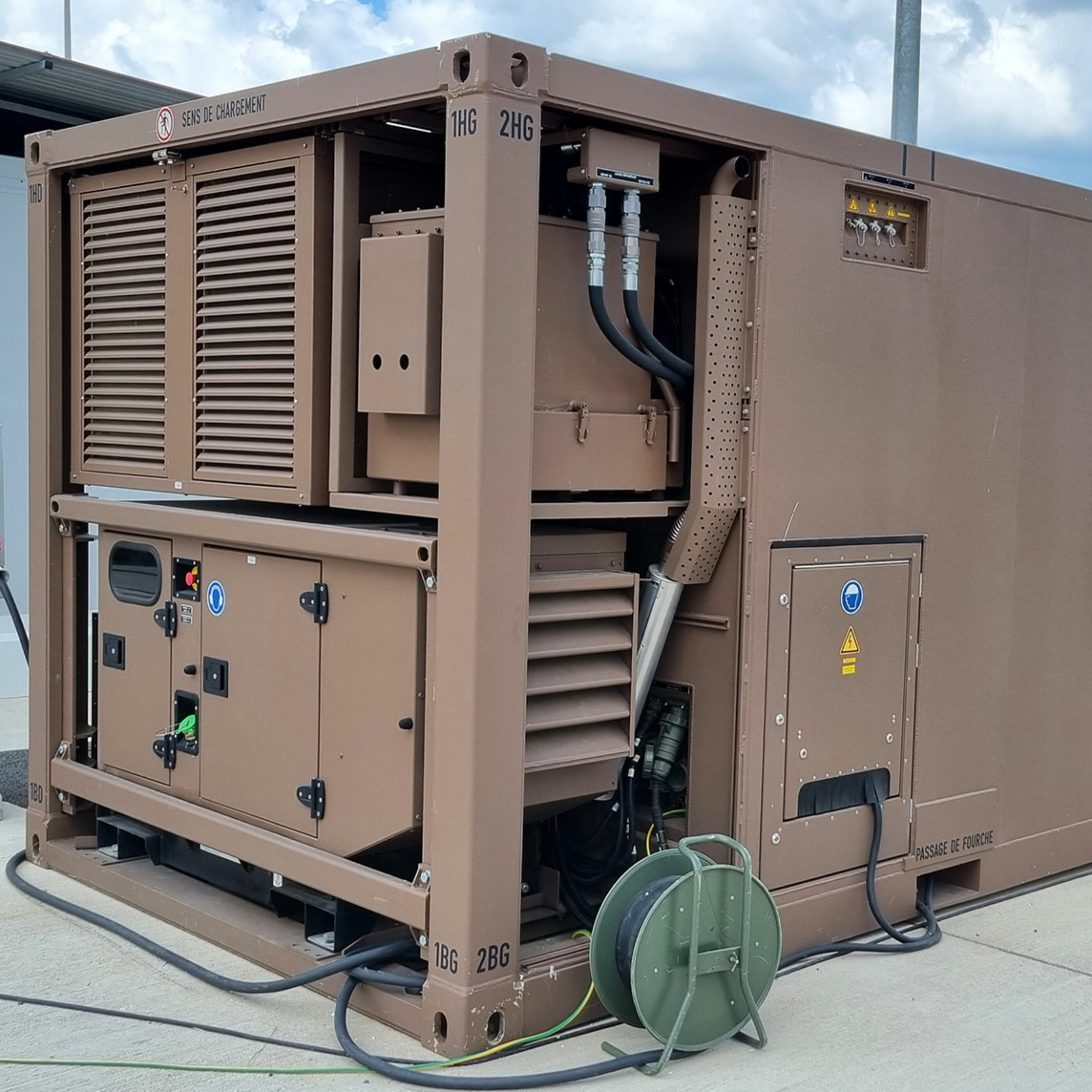


Its development has been entirely carried out by Turgis Gaillard, drawing on over twenty years’ experience in the use of UAVs in combat, and reusing available, qualified technology building blocks produced and supported by leading European equipment manufacturers.

Intelligence, surveillance and reconnaissance (ISR) missions

Thanks to its endurance, AAROK can cover an area of tens of thousands of square kilometers, or loiter for many hours monitoring a point of interest (POI). Its speed and satellite communications capabilities enable it to carry out missions far from its home base.
It is equipped with a full suite of sensors:
The AAROK’s features and performance make it particularly suitable for:
Strike missions

Alongside its radar and ability to be deployed from rough terrain, the AAROK’s other comparative advantage is the quality of its weapons. It is capable of striking targets dozens of kilometers away, with a very high accuracy, using powerful 250kg guided munitions.
This means it can destroy targets at a stand-off distance from most anti-aircraft threats, making AAROK the most suitable UAV for high-intensity operations.
The AAROK’s features and performance give it the following capabilities:
In future, AAROK will offer offensive jamming capabilities to support joint air operations.
Communications relay and C2

Today’s military operations rely on communications networks to create a vast information-sharing system. This gives the various tactical echelons greater situational awareness, enhances their appreciation of the environment and accelerates the pace of maneuver. However, the integration of these different data link systems, developed by each service branch, is a real challenge.
Equipped with ODIN, AAROK helps to meet this challenge by forming a battlefield airborne communications node.
It offers optimal connectivity with the various elements of a digitized land force, regardless of natural barriers; fusion with data links from other domains (air and sea); and long-distance transmission to headquarters thanks to its satellite communications systems.